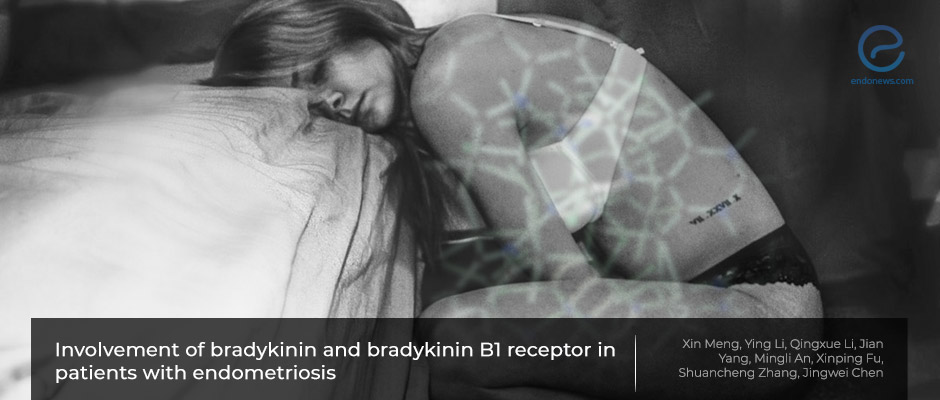Potential new Target to Reduce Endometriosis Pain
Oct 15, 2021
Bradykinin B1 receptor antagonists could help treat pain in endometriosis.
Key Points
Highlights:
- Bradykinin signaling may be involved in endometriosis-associated pain by inducing prostaglandin E2 and prostaglandin F2α.
Importance:
- Targeting the bradykinin B1 receptor could be a novel therapeutic approach to reduce pain in endometriosis.
What's done here:
- Researchers analyzed the levels of bradykinin, prostaglandin E2, and prostaglandin F2α in the blood of women with endometriosis and those without the disease.
- They also measured the levels of BKB1R mRNA and protein in these women.
- They then correlated these levels with the intensity of pain that women with endometriosis experience.
Key results:
- The protein and mRNA expression of BKB1R is substantially increased in women with endometriosis.
- The release of prostaglandin E2, prostaglandin F2α, and bradykinin in the blood is higher in women with endometriosis.
- PGE2, PGF2α, and bradykinin and the increased expression of BKB1R protein and mRNA are significantly correlated with the intensity of the pain in women with endometriosis.
Limitations:
- The sample size of 50 women is quite small.
- The expression and cellular location of bradykinin B1 receptors in cells grown in the laboratory is necessary to further confirm these findings and better understand the role of pain‑producing substances in endometriosis.
Lay Summary
The inflammatory mediators, bradykinin, and bradykinin B1 receptor may play a role in the onset of endometriosis-associated pain according to a new study by Chinese researchers. They do so by inducing the prostaglandin signaling pathway. Therefore, targeting these biological pathways could be a new therapeutic approach for endometriosis and increase patients’ quality of life.
Although pain is one of the main symptoms of endometriosis researchers do not fully understand its exact cause and mechanism in the disease. However, they know that the overexpression of the BKB1R can lead to high levels of pain after a longer stimulation interval.
In order to further analyze the potential role of bradykinin and bradykinin B1R, a team of researchers led by Dr. Jingwei Chen from the Institute of Integrative Medicine at the Hebei University of Chinese Medicine in China collected endometrium samples from 50 women with endometriosis and 20 women without the disease and evaluated the expression of bradykinin B1R protein and mRNA.
They also measured the levels of prostaglandin E2, prostaglandin F2α, and bradykinin in the blood of the women.
They found that the protein and mRNA expression of bradykinin B1R was substantially increased in women with endometriosis compared to those without the disease. Moreover, the release of prostaglandin E2, prostaglandin F2α, and bradykinin in the blood was higher in women with endometriosis.
Importantly, the researchers found that the levels of prostaglandin E2, prostaglandin F2α, and bradykinin and the increased expression of bradykininB1R protein and mRNA were significantly correlated with the intensity of the pain in women with endometriosis.
They concluded that bradykinin and bradykinin B1R are involved in the onset of endometriosis-associated pain and that they may play an important role in pain by inducing prostaglandin E2 and prostaglandin F2α.
The study is published in the journal Experimental and Therapeutic Medicine.
Research Source: https://pubmed.ncbi.nlm.nih.gov/34539836/
bradykinin pain inflammation prostoglandin PGE PGF endometriosis quality of life

